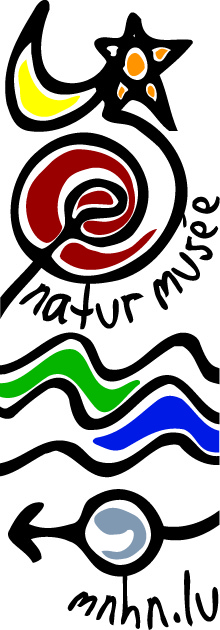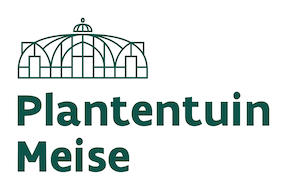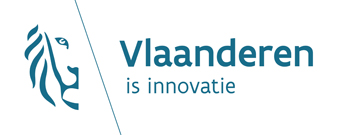Meise Botanic Garden works on several aspects of botany. We conduct fundamental research in fields such as ecology, taxonomy and evolution, and are equally active in more applied aspects such as conservation and education, protecting plants and their habitats, and improving and disseminating knowledge of the world's plants.
This knowledge is then shared with the general public and other scientists. Large and globally important collections of plants, both living and dried, are held in our institution as are books and other bibliographical resources dealing with plants. While these have always been open for research, we have been digitizing our herbarium collections to make them more accessible. The purpose of this crowdsourcing platform is to help us in our mission to document and digitize our collections while giving the public the chance to take an active part in the process, contributing to the making data from historical biological collections more easily accessible for a broader community of scientists and other citizens alike. Such an enormous task is one we cannot do alone, and so this platform will allow enthusiasts to help us in our task, hopefully in an enjoyable and interesting fashion.
What are DoeDat and DigiVol?
DoeDat has been built using the Open Source project crowdsourcing platform DigiVol, built by the Australian Museum in collaboration with the Atlas of Living Australia. We have since extended the interface so it can accommodate different languages and made our own code open so that other institutions can set up their own multilingual version of Digivol.
What does DoeDat mean?
DoeDat was funded by the Flemish Government under a project called DOE! (Digitale Ontsluiting Erfgoedcollecties - Digital Access to Cultural Heritage Collections). DoeDat is all about creating data and “doe dat”, means “do that” in Dutch.
About DigiVol.
DigiVol is used by many institutions around the world as a way of combining the efforts of many volunteers to digitise their data. These data may be in the form of herbarium or other type of specimen labels, field notebooks and diaries, recording sheets, books, registers, or photographs.
There are many ways of extracting information or data from images depending on what the end use will be. Some data can be extracted from specimen labels and field notebooks only by transcribing (or typing out) the handwritten words. Other forms of collecting data may be by tagging images or identifying animals and their behaviour in the images. DigiVol uses several approaches of data collection in its website. Online volunteers are presented with tutorials to help them get started in joining a project.
Why capture these data?
Capturing data into a digital form is important as it helps researchers to have access to data that can be used for a whole variety of studies. An example of this is by helping scientists and planners better understand, utilise, manage and conserve biodiversity. They can use data extracted from herbarium specimen labels and field notebooks for many uses, including:
- Understanding the present and past distribution of species (for understanding how best to conserve individual species or ecosystems).
- Understanding biological changes driven by climate and other environmental changes.
- Identifying species from morphological or genetic characters
- Compiling information on the relationships between plants and people (e.g. vernacular names, traditional uses of plants).
These data, once captured, become available through a broad range of mechanisms that make it accessible to the scientific and broader communities.
These mechanisms might include websites such as:
Submit a project
DoeDat can potentially be used by any institution or individual who has a project that would be well-suited to DoeDat volunteers. If you are interested in posting a project on DoeDat and you have material that would be suitable, please contact us via doedat@plantentuinmeise.be.
Useful references
Papers:
- Accelerating the digitization of biodiversity research specimens through online public participation
- Transcribing between the lines: crowd-sourcing historic data collection
- Australian Museum DigiVol resources
How can I help?
Become an online volunteer!
Anyone can become a DoeDat volunteer: all you need is a computer, internet access, and an e-mail address. To become a volunteer you must register on DoeDat before you can join a project, providing your e-mail address and a few details. By registering you will be given access to DoeDat and associated forums. You may also receive occasional news.
How to get started?
Once you have registered, you can join any project in the list on the front page of the website. After choosing one, click on the 'Get Started' button.When you do this, you will be presented with your first task.
For herbarium or museum specimen labels you will see a picture of a specimen and its labels and you will need to transcribe the information from the labels into the set of fields in the template below the image. Each project has a tutorial attached that explains the process and how to fill out the template.
We HIGHLY recommend that all users read the tutorial before starting transcribing! Once you have completed filling out the form of your task, click 'Save' and you can go to your next task. You can transcribe as many or as few tasks as you like. If you have any questions about a task, you can visit the discussion forums. You can see your progress and contribution, including saved tasks, under 'My contribution' in the 'My Profile' tab.
What happens next?
When a project is finished, the tasks are validated by an experienced volunteer. The data will then be returned to the institution, checked, processed, and made available online.Honour board
| Day tripper | View top 20 | |
|---|---|---|
|
|
{{daily.name}} | {{daily.score}} |
| Weekly wonder | View top 20 | |
|
|
{{weekly.name}} | {{weekly.score}} |
| Monthly maestro | View top 20 | |
|
|
{{monthly.name}} | {{monthly.score}} |
| DoeDat Legend | View top 20 | |
|
|
{{alltime.name}} | {{alltime.score}} |
Latest contributions
-
{{contributor.displayName}}
transcribed {{contributor.transcribedItems}} tasks from the project {{contributor.projectName}} .
Join project »


.png)
.png)



